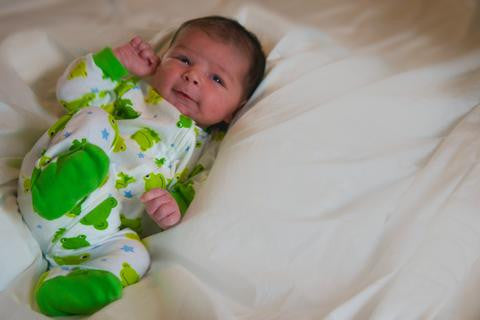Cloth Diapering At Night
It's 2a.m. The house is dark and blissfully silent... The moon dapples her fresh, silver light through your window... You are half-awake, listening to the peaceful breath of your baby, his body rising and falling ever so gently with each inhale and each exhale... You nuzzle close for a mid-night snuggle, warm and cozy in your comfy big bed... when you notice it's a little too warm... but just at your waist... and actually, you feel WET! UGH!!!!! I think most of have experienced that good ol' nighttime leak at least once in our lives, and if you haven't you should! It's really quite the experience! (Insert sarcastic expression of extreme excitement here) Sleep is a precious thing, and most of us parents don't really get much of it until our children are old enough to put themselves to sleep. Which is like, what, 15? So when we have to get up to change a diaper, clothing (our child's and sometimes even our own) and all of the sheets on the bed when we could be sleeping.... well that can make for one grumpy morning to follow. How do we prevent this from happening? I have found that most cloth diapering parents don't like to wake their baby multiple times a night for a diaper change, because... as I said earlier... sleep is precious, and once you wake up a baby, you could be spending the next few hours playing peek-a-boo as you strain to keep your eyes open. Or trying to soothe your now - screaming baby as you strain to keep your sanity. There are a few really great options for nighttime cloth diapering that are worth reviewing, as you may find that one works better for you than the others. Pocket Diapers Pocket diapers - like FuzziBunz - are a great option because you can adjust the absorbency simply by adding or reducing the number of inserts inside of the pocket. I find that with our new One Size diapers I can usually get away with only one insert at night for our 20 month old, but sometimes I will add a cotton/linen insert to the microfiber insert for extra protection. I have heard of a few parents adding as many as three microfiber inserts to their child's nighttime diapers, and while I understand the logic behind this, I can't imagine it would be too comfortable for the child. Not only that, but having that many inserts may cause gapping at the leg openings, resulting in leaks, which would obviously defeat the purpose. Fitteds and Wool This is a favorite of many, because - if prepped properly - is basically bulletproof. Fitteds are diapers made out of natural fibers like hemp, bamboo, or cotton velour (all usually organic) which require a cover. While you can use synthetic covers, most prefer to use wool covers. Wool is a natural temperature regulator, meaning that it will keep you warm in cold temperatures, and keep you cool in hot temperatures. It is also able to absorb up to 1/3 of its weight in moisture, without actually feeling wet! The most "difficult" part about using wool is lanolizing it, which is actually a pretty simple process in which you use lanolin to make the wool water-resistant. This will keep your child's clothing (and your bedding, your lap, your grandma's lap, your sister's lap...etc etc) dry, and the liquid where it should be: in the diaper. As an added bonus, you can let wool air-dry over and over again without ever having to wash it unless it gets pooped on! Prefolds and Covers Thick cotton or hemp prefolds can be another good option, but you will likely need to use two prefolds, or a prefold with a doubler inside in order to last through the night. Using a wool or PUL cover will prevent leaks, and this option works about the same as the fitteds and wool (although you may need to experiment with different folds to find what works best for your child). You can likely make any cloth diaper work for overnights with the right cover and/or inserts. Layering a hemp or bamboo insert underneath a microfiber insert will increase absorbency without adding a lot of extra bulk. Wrapping an insert of your choice inside of a cotton prefold is also a great choice when contained within a wool or PUL cover. The key is to observe your child's "output" during a typical night, and use just enough absorbency to prevent leaks. What do you use for overnight?


